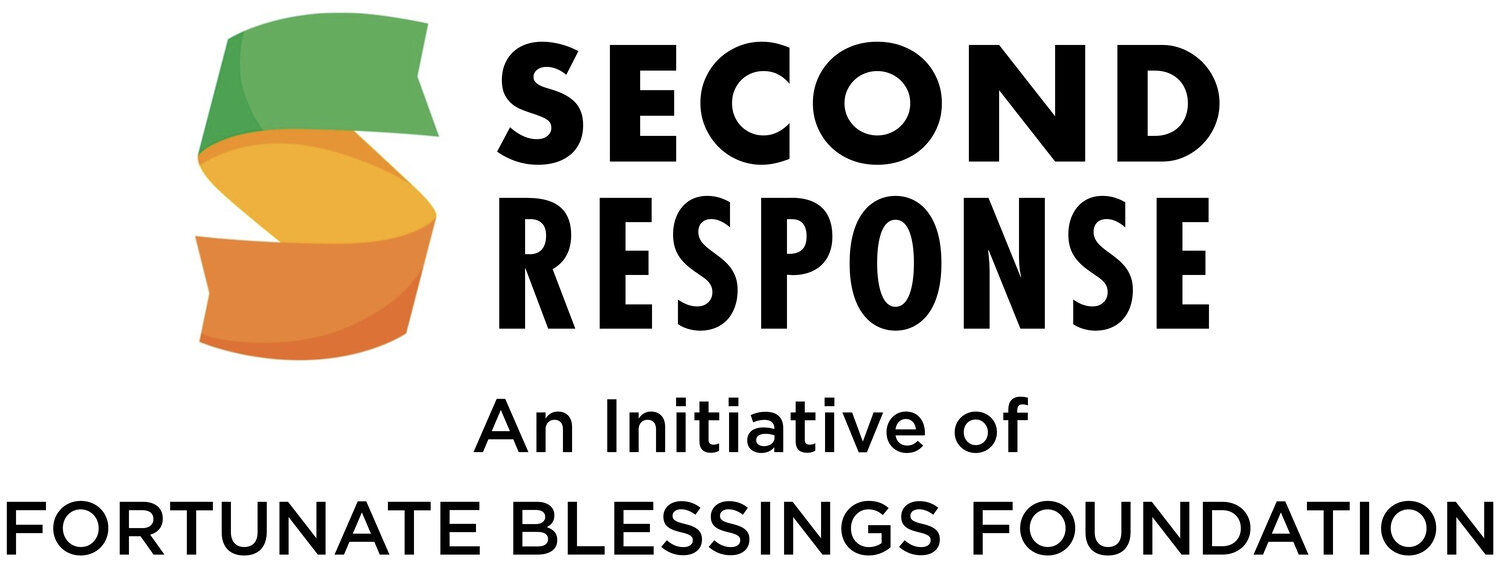Thank you all for your incredible support during the 2016 Give Local Campaign! We raised a total of $23,409 excluding the additional matching funds the Connecticut Community Foundation will allocate soon!
Fortunate Blessings/Second Response is Awarded a Grant from the Community Foundation of Northwest Connecticut
Fortunate Blessings is pleased to announce it has been awarded a grant of $3,500 from the Carlton D. Fyler and Jenny R. Fyler Fund of the Community Foundation of Northwest Connecticut. Proceeds from the grant will support Second Response Training Programs for caregivers exposed to recurring stress and trauma.
Celebrating a Successful Community PLAYshop at Grace Farms!
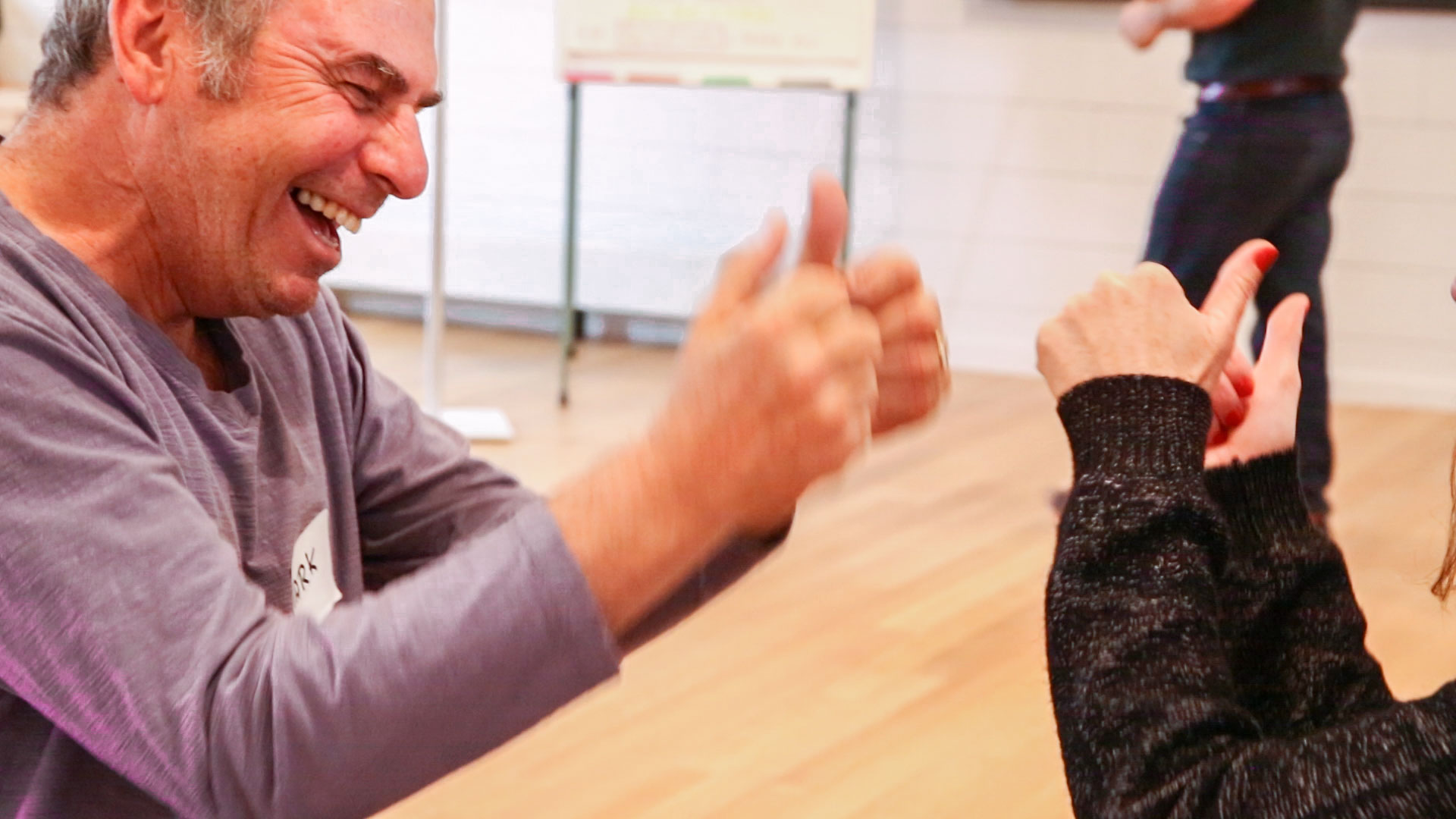
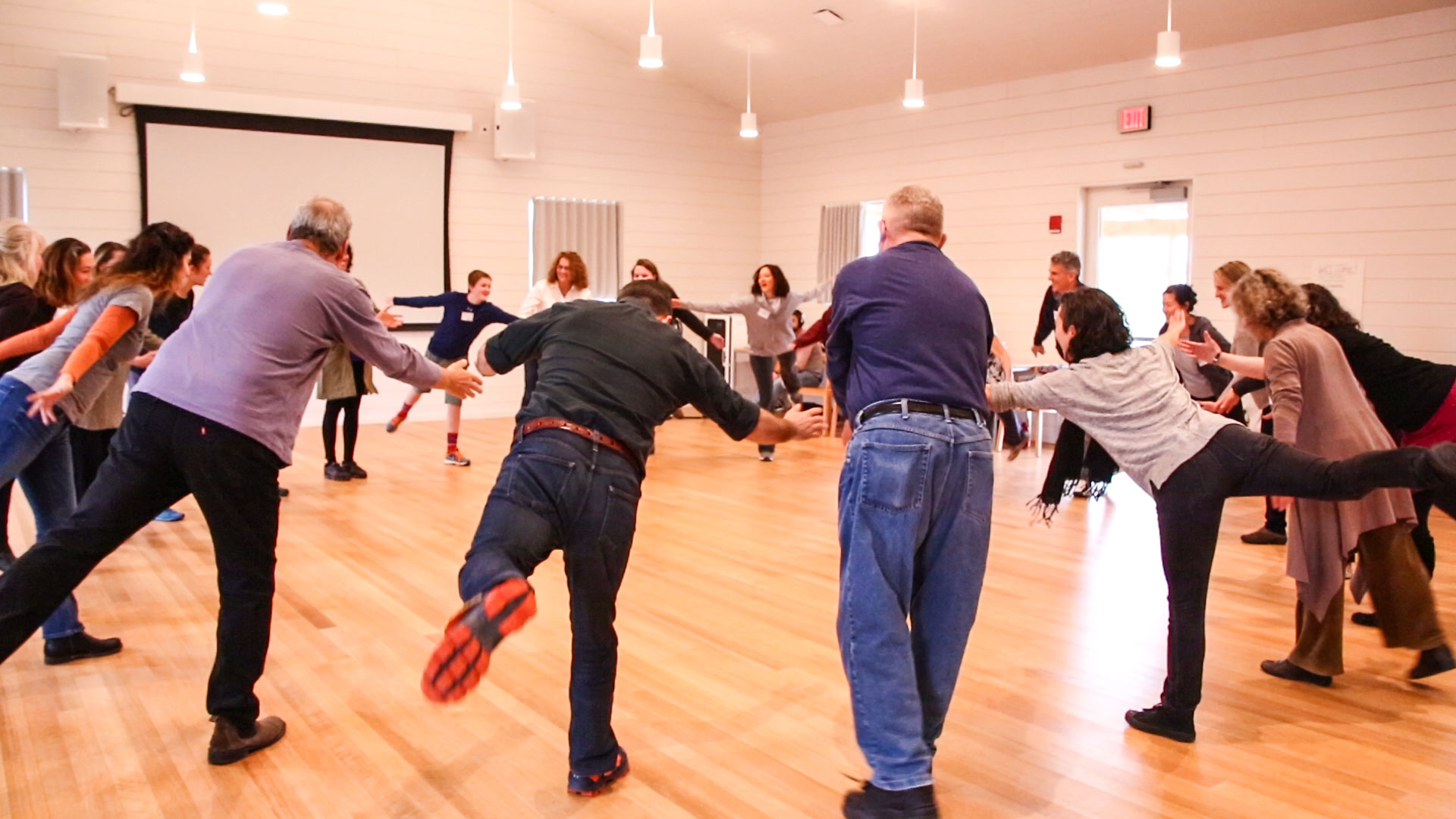
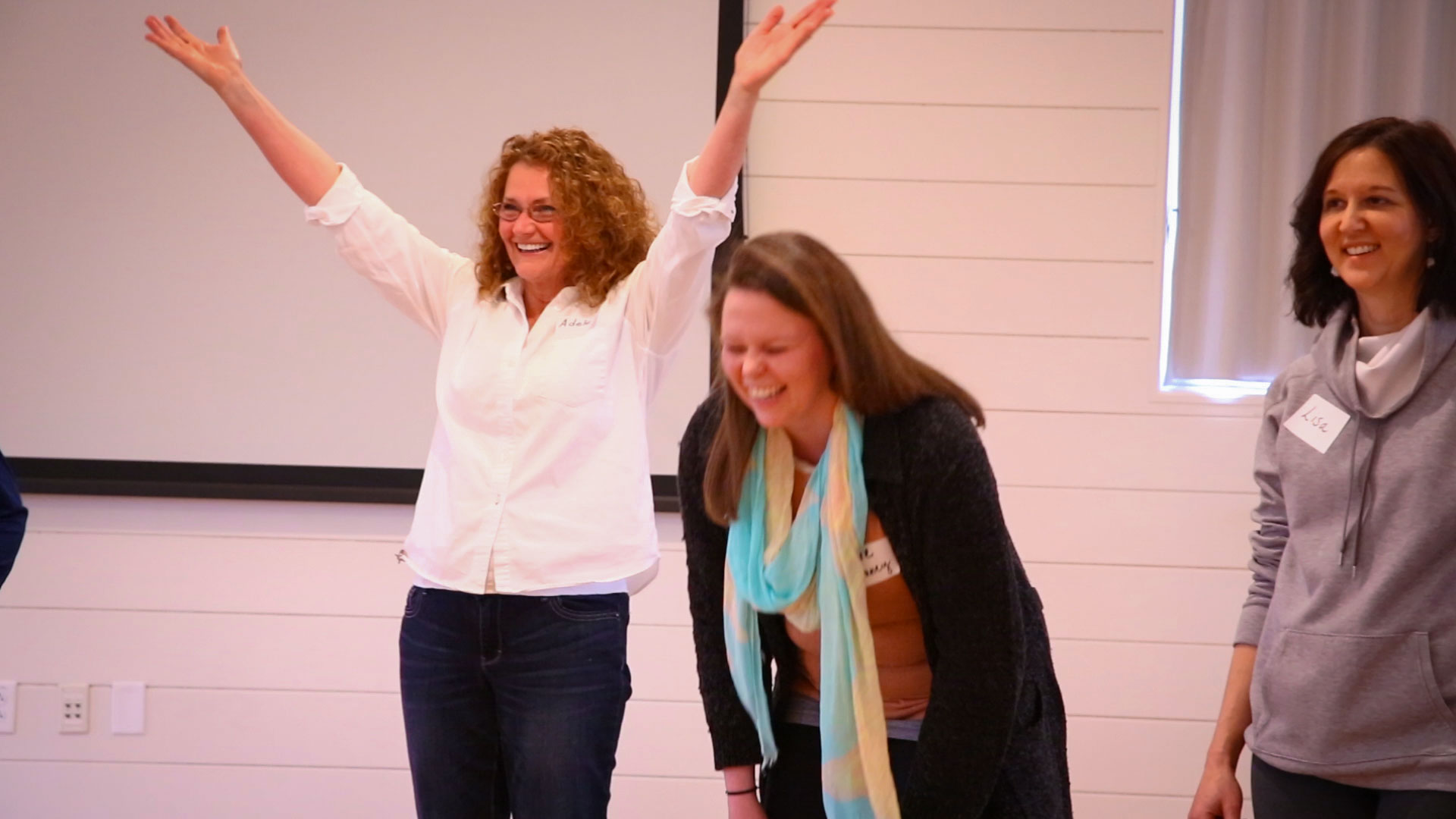
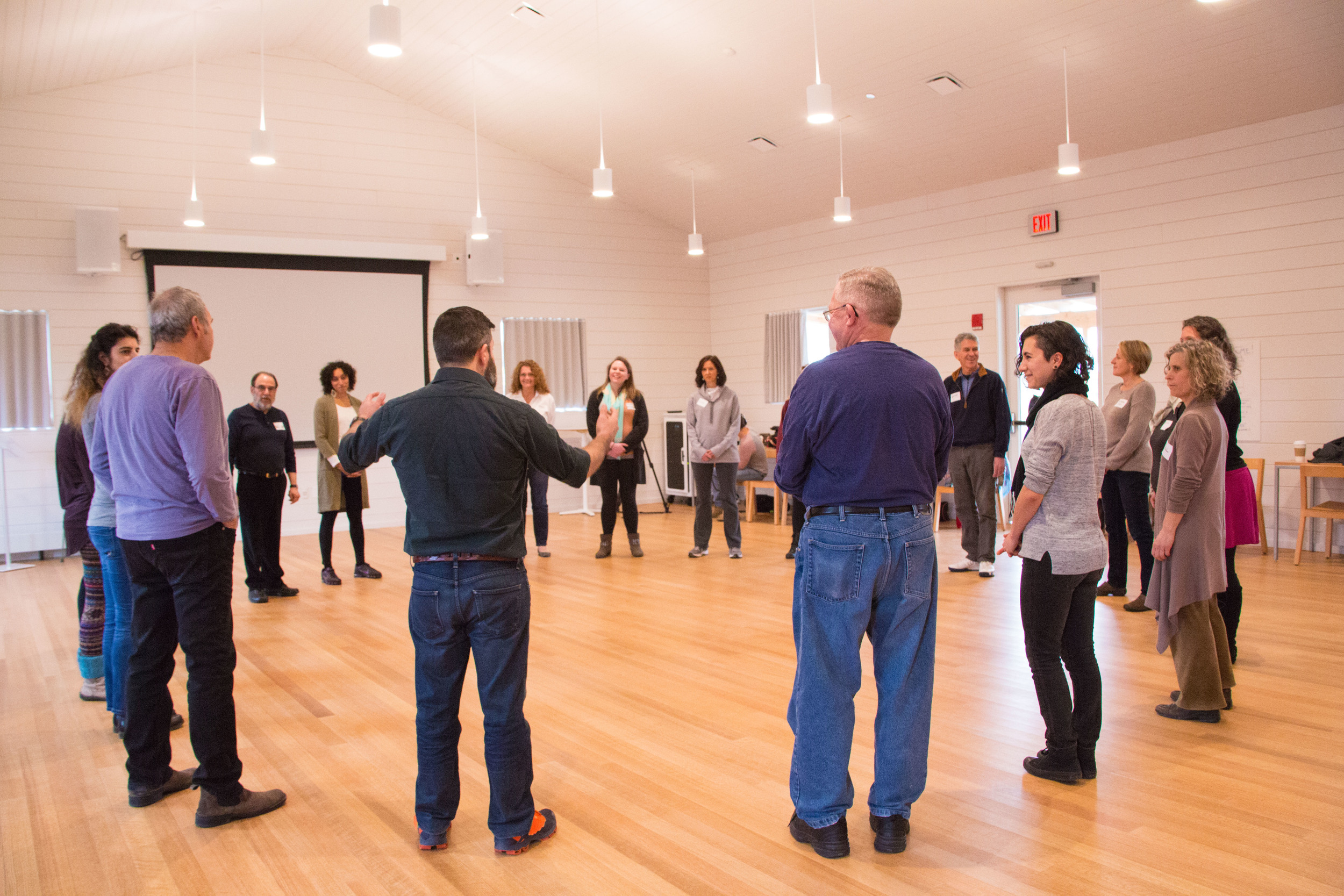
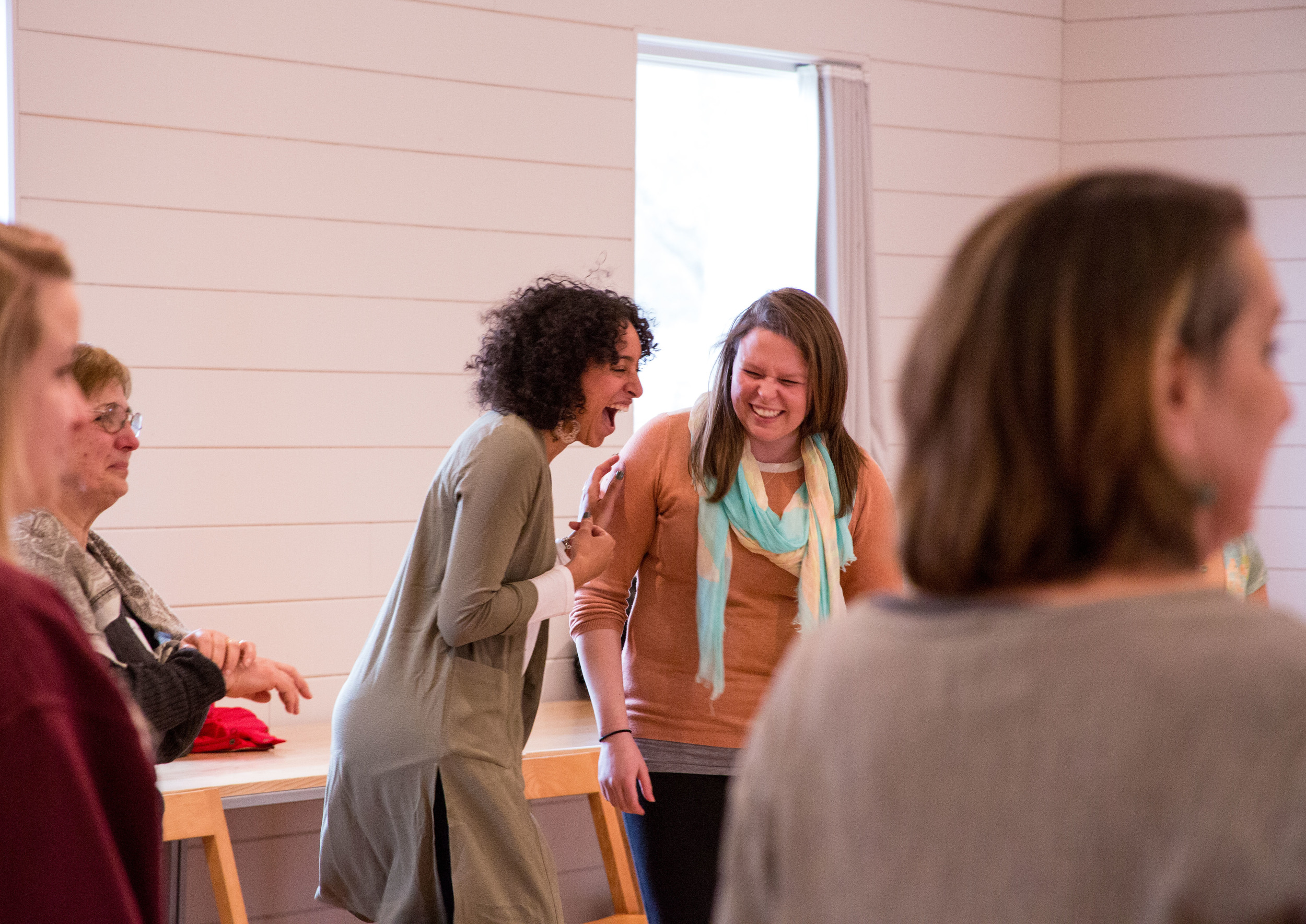
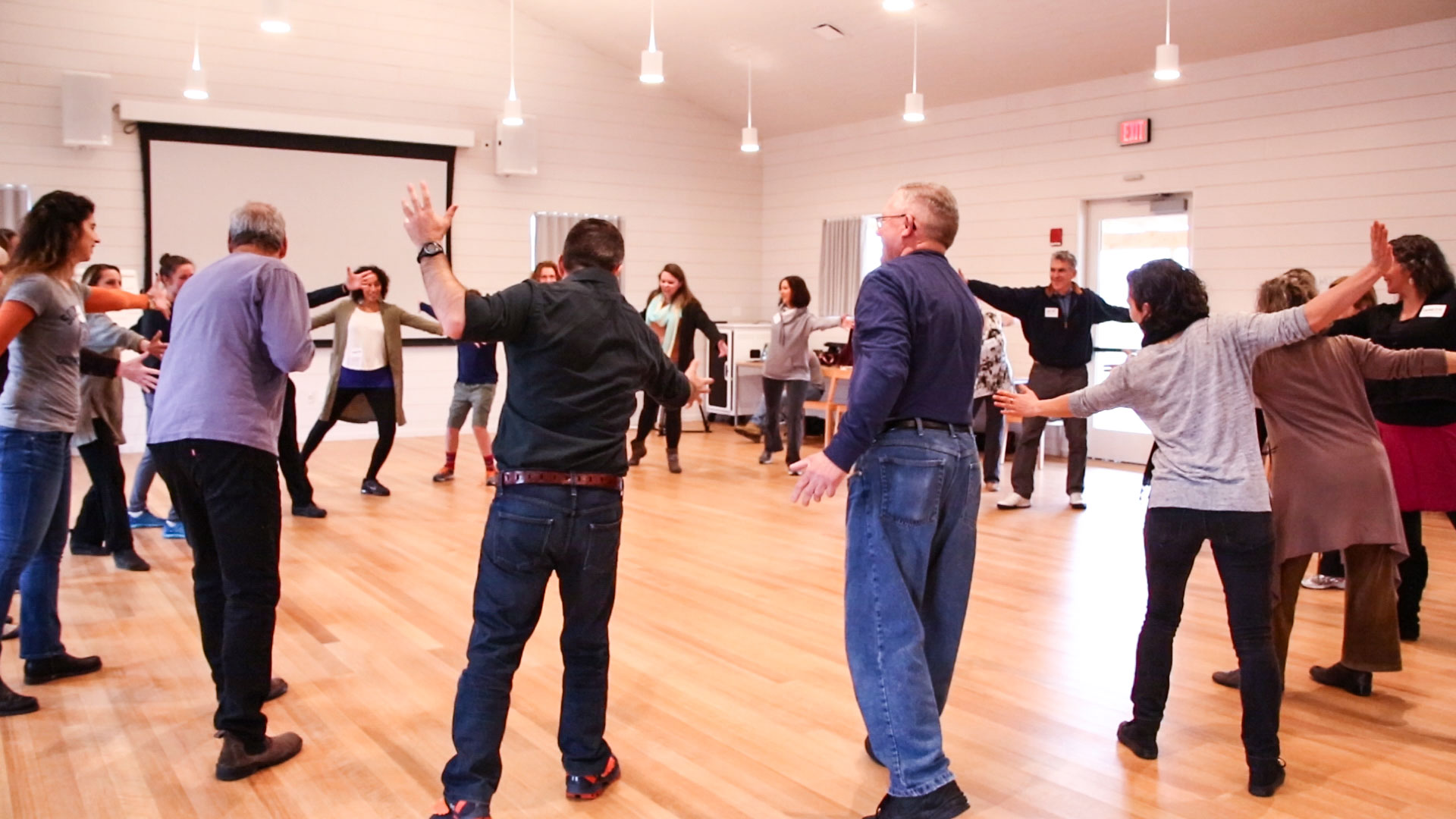

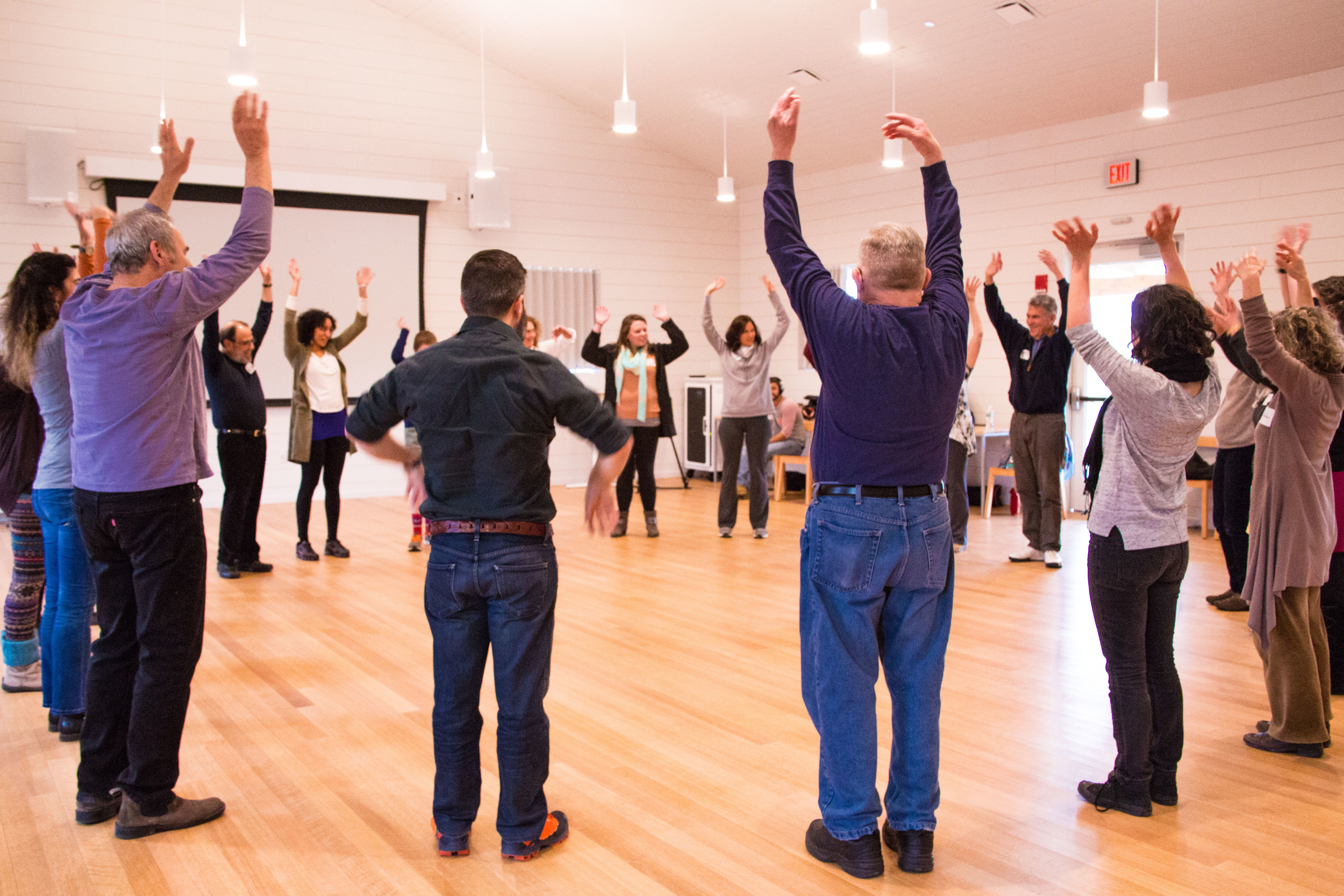
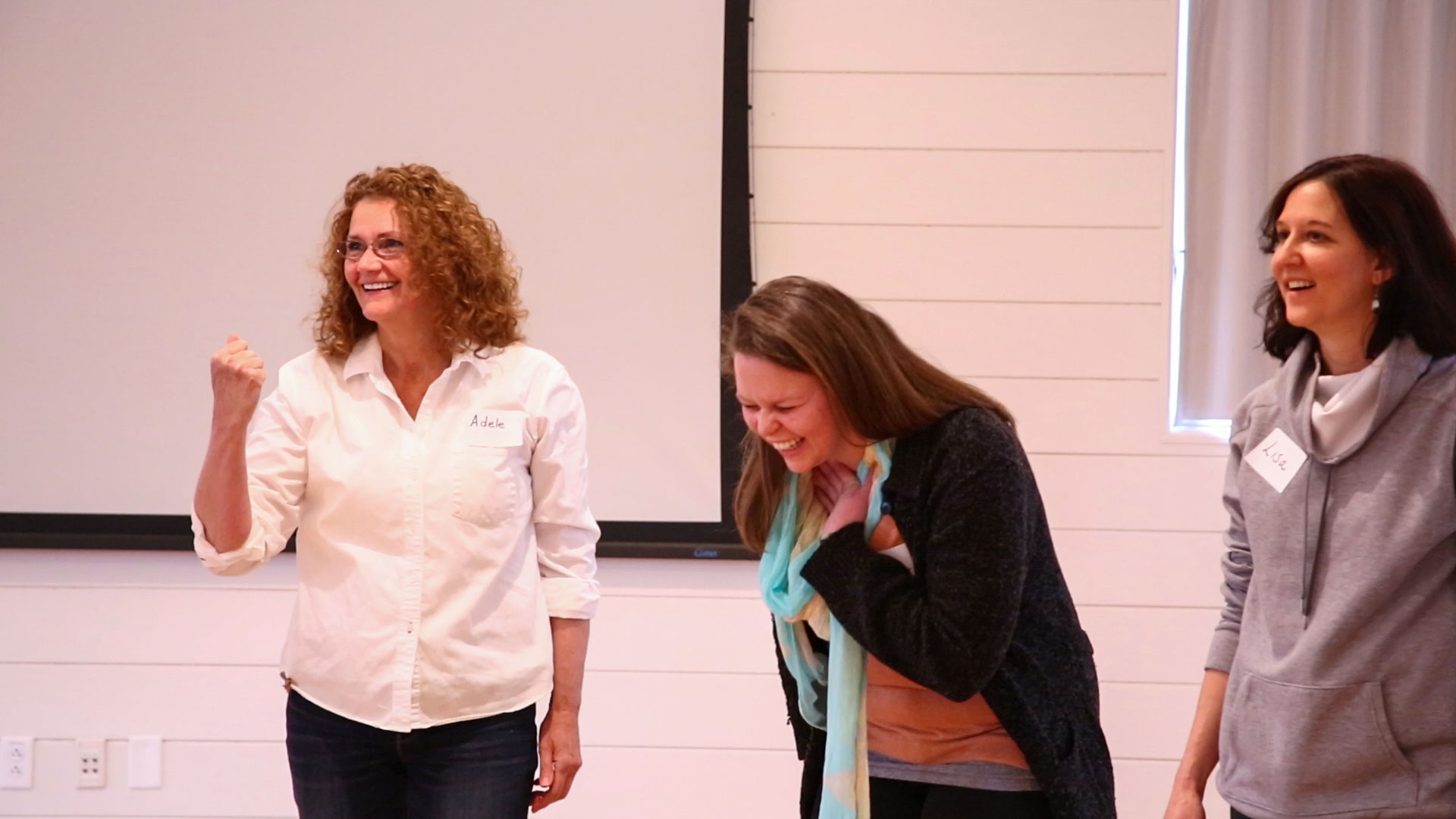
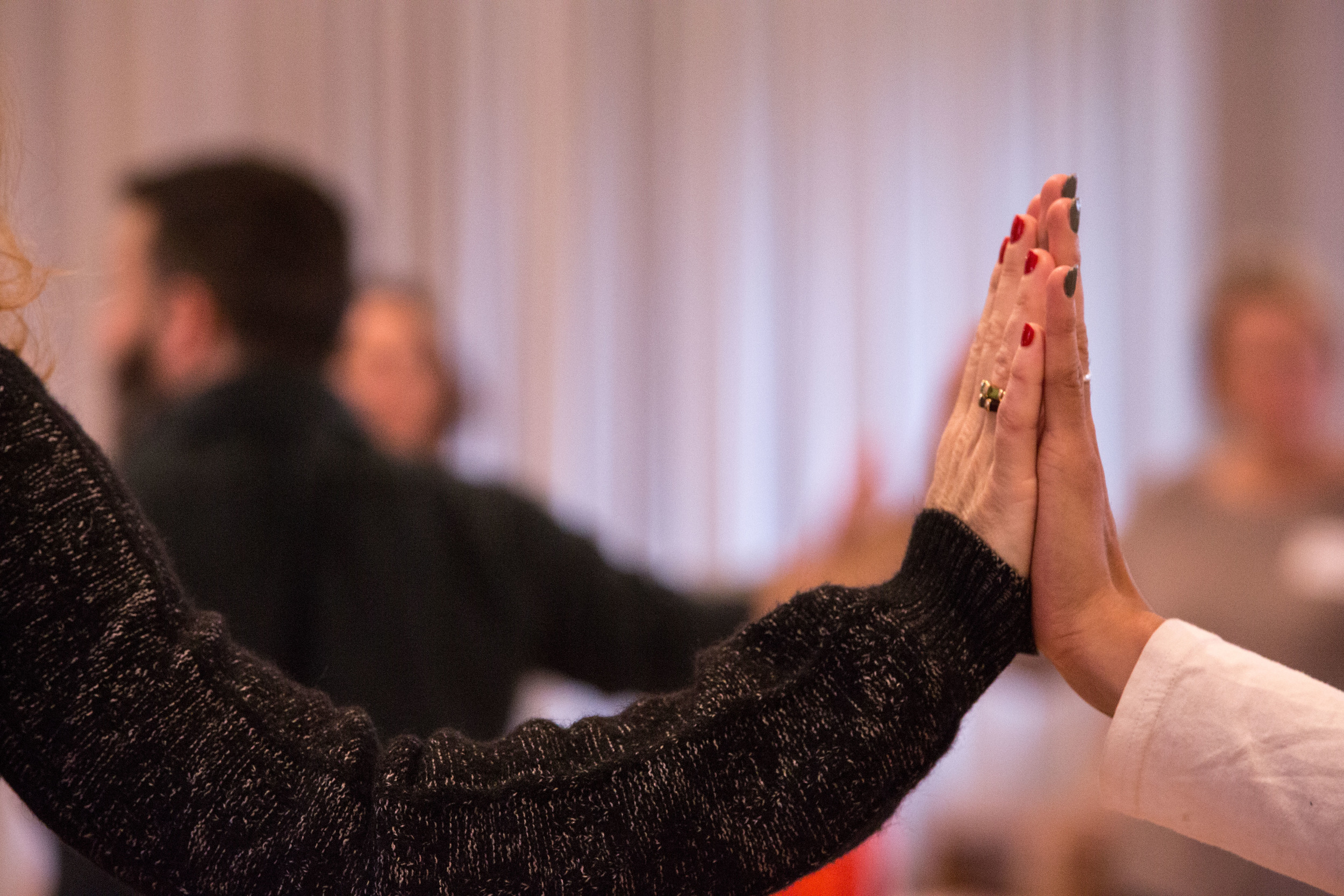
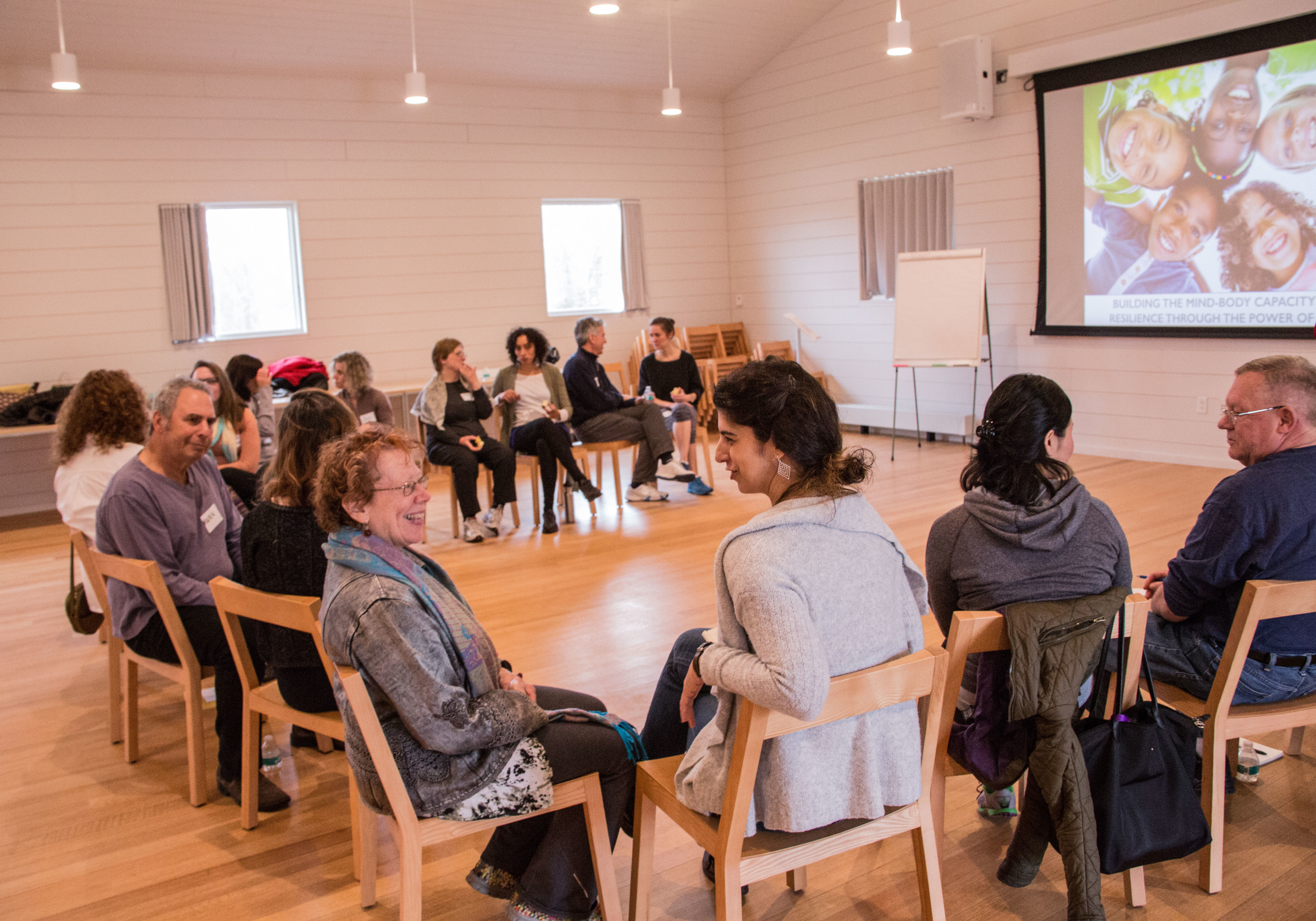
Second Response has been supporting children and caregivers for over 12 years. In the past, our work has been focused on post-disaster relief, but as the social and environmental world is changing we are now recognizing the harmful effects of chronic stress, distress and trauma in everyday life. In recognition of this reality, Second Response is offering pre-emptive and caregiver support training programs. Our objective is to give these dedicated caregivers new tools through the experience of play to relieve their own secondary trauma and better serve those in their care.
As a recipient of the Grace Farms Foundation Space Grant, we recently hosted a Community PLAYshop Training at Grace Farms, which was made available for free to the general public. With the incredible support of the Grace Farms Foundation staff, we shared our PLAYshop methodology with a room full of enthusiastic participants including nurses, social workers, mental health clinicians, teachers, somatic therapists, first responders and more.
In a post-evaluation, participants overwhelmingly reported that they believed the training could greatly improve their relationship to stress, distress and trauma. Further, participants expressed that they found the training could make a tremendous difference in how they take care of themselves, as well as others, and in particular could make a difference in how they do their job. One individual expressed that they are “understanding more the need for presence and focus on the body” in their work with children. Another participant described that she “hope[s] to use [the methods] as an individual but to also incorporate into group and individual therapy as per clients needs.”
Overall, two recurring themes were expressed by many of the responses -- namely that participants learned or were reminded of “the value of play” and “the importance of nonverbal interventions” during the PLAYshop Training.
Join our mailing list to learn about future programs you can participate in or contact us to bring us to your community!
Please also consider supporting our work to help us continue to offer programs such as this one. An upcoming online fundraising drive on May 3-4 through Give Local gives you an opportunity to stretch your generosity. Every dollar raised will be amplified by local sponsors maximizing your donation!
"The Current State of Total Madness" by William Spear
"Nothing comes from violence and nothing ever could." Sting
We are all mad. Not just angry, crazy or furious; we have all begun to go stark raving mad and there's even some proof to this trend.
French historian and philosopher Michel Foucault first wrote about this phenomenon in 1961 in which he documented the history of insanity from the Middle Ages to present day. Varying states of lunacy from both a cultural and scientific perspective included the creative and liberating forces of great artists Vincent Van Gogh, Salvador Dalí and Francisco Goya), famous writers (Friedrich Nietzsche, Antonin Artaud), legendary rulers (King Charles IV of France, Martin Luther, Irma Grese and Queen Mary), brilliant inventors (Nikola Tesla and Benjamin Franklin) and fictional villains (the tragic King Lear and horrific Hannibal Lecter). While most of these eccentrics had some redeeming qualities that competed with their maniacal behavior, nearly all made significant marks on our collective psyches - some more pleasant than others. There is indeed a fine line between genius and insanity.
Today's cast of characters now includes a hugely disproportionate number of corrupt government officials from every country, economists whose policies could destroy their own country, religious leaders and educators who urge congregants and students to arm themselves and kill, and pseudo-intellectuals who applaud the fascist remarks of candidates. Crazed.
Whether you believe that the greatest threat the human race faces now is climate change or terrorism, it's easy to find madness on both sides of every debate. Small-minded politicians with bizarre beliefs and nothing to display beyond clever slogans and their immense egos promote quick fixes with total disregard for any long-term implications. It's as if the past has no meaning at all and history taught us nothing. Madness.
How can we forget decades of unjustified war and violent aggression -- carefully orchestrated to obscure the real purpose of securing the very commodity that led us to the brink of widespread cataclysm? This was no solution to either threat, but instead it accelerated both terrorism and climate change. Is our rage so blind, our vengeance so stupefying that together they have erased the memory of our past folly? Do we truly think something good can come from more violence or believe something ever could? Absurdity.
The leaders of fanatical cults must be celebrating in their hideaways as we load more ordnance onto B-2 Spirit Bombers, artillery that costs taxpayers more than $900,000,000 for each aircraft. "We will do everything we can to minimize collateral damage," declare our military experts, conveniently avoiding any mention of our war on terror that thus far has killed more than two million people and wounded millions more. Senselessness.
As issue spin pivots our attention from jobs and the economy to terror and security, fear again becomes the driving force, protection from danger delivered by bigger armaments both on the battlefield and in our basements. Gun sales skyrocket, defense budgets quietly escalate, schools prepare for slaughter. Insanity.
* * * * *
So what can we do? How can we begin to turn the tide with some degree of reason, employ even the slightest measure of hope, make a modest course correction if not for ourselves then for future generations who will inherit this crazy world we've created out of our own ignorance? The ideas themselves will appear to many as the epitome of foolishness, but then again, what do we have to lose since we've already lost our collective mind?
First, at whatever personal cost, let's acknowledge the reality that we have been the architects of our own destiny. We are not the victims of alien spaceships filled with tiny green people who took over our brains and made us act in these ways. No, my friends, we did this to ourselves. Let's own it and name it. We've gone off the rails, we've lost our marbles, we're cray cray, irrational, mad as hatters beyond anything even Lewis Carroll could have dreamt up. Only when we name the infirmity can we begin to develop a treatment plan.
Second, let's all take a few deep breaths. A little more oxygen never hurt anyone, and too much carbon dioxide hampers clear thinking and can create brain fog. Let's face it - we're in some pretty thick smog right now, and we could all use some fresh air. So get yourself to a city park, take a walk in the woods, get some exercise, take a stroll by the river. Get out of the city or if you can't, get yourself to the gym, an online yoga class, or do some good old, no cost calisthenics. Get that blood pumping- we're going to need every heart we can open.
Third, stop complaining - contrary to what some people may suggest, it doesn't help at all and may actually be harmful. It rarely makes any difference when you complain about things you cannot change -- like getting caught in rush-hour traffic or stuck in the security line at the airport. Most people don't want to hear you complain anyway.
Fourth, show a little gratitude for what you have. The very fact that you are reading this on a computer, tablet or phone is amazing enough, isn't it? Sure, there are problems with technology - we all know that - but isn't it mind blowing even to be able to read when 775 million people in the world can't? Maybe they are all luckier than we are - ignorance is bliss and all that -- but still, I'd bet you're happy about the gift of literacy. Are there other gifts you can acknowledge? Vision? Children? Parents? Friends? Weekends?
Fifth, commit a few acts of random kindness and senseless beauty. How does it make you feel when you're on the receiving end of one of those? Why not give back, pay it forward, do it for no reason at all. It's free and probably will take no more time than reading the next paragraph. Go ahead.
* * * * *
OK, now that we're on the same page, here's my plan - the one I'd love to convince a few people in power to consider seriously. How radical is this:
Stop killing innocent children, cease the bombing everywhere, bring the planes back. Now, load them up with healthy food, medical supplies, children's clothing, warm blankets, cooking supplies, fresh water, protective shelters, seeds, good books. Drop these things into every neighborhood that we've destroyed. Shower them with love, kindness, stuff that supports life. Give enough people things they need and you will win them back from those who are trying to rule their country with violence and killing as they attempt to convince them we're the bad guys. Surprise the enemy with big love and start taking care of the children we've harmed.
How novel! How extraordinary! How utterly mad it would be to promote love and turn away from war.
And now admit it - is this really crazier than what we've been doing over and over again expecting the outcome to change? I don't think so. Maybe - just maybe - we could actually start acting like there's only one of us here.
No go ahead and tweet this, share it, spread the word. Post it on your home page, write a song about it, shout it from the rooftops -- we're in this together. One planet, one world, that one heart we all share. This is the current state of mad love.
More from Croatia
I first came to Croatia as a speaker at a large macrobiotic conference organized in Kumrovec, 200 miles to the East. It was the birthplace of Joseph Broz Tito, the president of Yugoslavia. I recall being immediately taken by the beauty of that small village even though our host, Zlatko Pejić, was already warning that the ethnic tensions between Croats and Serbs could result in a brutal war. Over the next five years, I’d return to Croatia six times visiting many different areas throughout the region while bombs could be heard exploding nearby. By the end of the conflict, Yugoslavia ceased to exist, replaced by a scattering of independent republics.
Now, driving through Vukovar twenty-five years later, we are reminded of the 3,000-4,000 prisoners who had been held in Ovčara, turning a country farm into a prison camp. Land mines still can be found through these fields as everyone in this small village still recalls those dark days. The Vukovar massacre that occurred here when Croatian prisoners of war and civilians were murdered remains one of the worst war crimes in Europe’s history since World War II. Those atrocities weigh heavily on my mind through the constant mist hanging over these fields today.
We pull into the driveway of the local Red Cross and immediately see 20-25 staff members and volunteers huddled in a car port. They are awaiting our arrival. We’d agreed to conduct 30 minute “self-care” interactions in the small conference room normally used for donating blood. Those attending who staffed the camps in 8 hour shifts were invited and would join in out of their individual interests. After brief introductions, we launched into the first of three PLAYshop trainings we’d conduct over the next 2 hours. The first group would travel to the refugee camp in Opakovač right after our work together; the second, smaller group of about 8 residents of nearby Osijek would be a mix of administrative and logistical staff members and supporters while the third group was comprised of volunteers who had just completed their work amidst the heavy rain and mud we’d soon be witnessing ourselves. These big-hearted workers distributed food, blankets and basic supplies to the 7,000 migrants who’d arrived the night before -- a seemingly endless repetition of providing the most basic needs to the 120,000 people who had already passed through Croatia since the UNHCR established the camp just a few miles from the border.
While each group’s members differed related directly to their own level of exhaustion, we felt that everyone could benefit in some small way to both the movements and externalizations as well as the strategies for self-care we’d teach. Some participants laughed uncontrollably throughout the games (a good sign) while a few others remained stoic and withdrawn – also a totally acceptable result. The majority of volunteers joined in the full round of exercises, their bodies softening as more opportunities were presented to help release stagnation and “wiggle” a bit out of their “discomfort” zones. Suspicion turned quickly to silliness, the call and response of the PLAyshop providing a few moments of respite from the demands of the work.
By the time we left Vukovar, many were eager to pose for pictures with these two strange men, one the father and one the son, who’d dared to nudge their way into the midst of this humanitarian crisis 4,500 miles away. Expressions of genuine gratitude including a few warm embraces ended our brief stopover as we made our way to the camp to witness for ourselves what we’d only heard about second hand.
Arriving at Opacovać's Refugee Camp, Eager to Offer Our Support
I’m in the back of a rental car, driving East from Zagreb to Opacovać through the Croatian countryside. Besides the unrecognizable words on Eastern European signage, we could easily be in Ohio, dotted with cornfields, tractors, warehouses. It's raining and about 50 degrees as we speed along the highway. My father drives as our host, Sanja, in the passenger seat, goes on about the conditions in the camp where we’re going. We’re having a grey time.
The Red Cross, along with twenty or so organizations, is operating what I’d call a transit relief camp along the long, unpredictable path to Germany. For those who aren’t up to speed, here’s what’s basically happening:
Refugees are fleeing the violent conflicts Syria. Staying in the country offers no viable future so they’re walking hundreds of miles to get out and most are heading to Germany, the third largest economy in the world, who has opened their borders. About 70% of those passing through here are single men. Many women and children were left behind because of the challenging and dangerous conditions of this journey. Many other refugees from neighboring countries are joining the migration in a global scramble to find a better life. For example, some are flying from other parts of the world to Bosnia and joining the thousands heading up through Eastern Europe. According to our host, they’re simply saying they’re also Syrian war refugees. It’s impossible to say one way or another. One hundred and seventy thousand people have passed through this spot in the past 30 days. That’s over five thousand people a day. While the numbers are impossible to calculate exactly, it is reasonable to estimate fifteen to twenty thousand children under sixteen. Some babies are carried all the way through in the arms of a parent, relative or trusted friend.
According to our host, the local government asked the Red Cross to take on the nearly impossible task of heading up the efforts and for other organizations to go through them. They’d need 10 times the staff to handle even that part, let alone manage the ever changing geographical (an political) landscape of the migration and the collaboration with local police who, everyone seems to agree, are really in charge.
Everyone is short staffed, constantly in flux, and thoroughly overworked. Taking a break is the furthest thing from anyone’s mind and so, after two or three days, most volunteers and aid workers are emotionally compromised and some kind of sick, a natural result of a taxed immune system and a massive humanitarian crisis with no end in sight.
As refugees pass through, they’re asked to register with immigration; but they’re often afraid (understandably) of any documentation or even any organized shelter because they think they’ll be detained and kept from proceeding. They’re suspicions lead them to refuse all but the most basic aid and then, when even that is often laden with complexity, trust — that most delicate and necessary ingredient in a supportive relationship — is lost. Therefore everyone’s acting on a high alert setting, perceiving danger at every move and tensed for conflict at any moment. Cortisol, the fight or flight hormone, is likely at an all time high among the collective refugees and volunteers as adrenal fatigue sets in.
Second Response’s mission of helping mitigate the effects of trauma on the body extends beyond just reaching survivors and refugees. We now aim to support these caring humanitarian aid workers with techniques they can use for self regulation and externalization.
For anyone willing to take the time to care for themselves, to be safer and more effective in their work with others, we’ll offer space to allow their own built up emotions to come out, build resilience (the ability and capacity to adapt to and recover from stressful circumstances) and therefore be better able to offer support for others. We’re partnering with those on the ground here by training people to manage the relief valve on their own pressure cookers.
Sanja often speaks of chaos and an ever changing landscape. With adequate shelter and supplies available for a few thousand people each day, the camp can function within an acceptable, basic level of support; however, on a day when those numbers double or triple (which has already been the case a few times in the past week) there is simply not enough of everything — time, space, food, water, dry clothing, medical care, psychosocial support — to deliver the proper level of care for everyone who may need it. Particularly with temperatures dropping and almost constant rainfall (it’s pouring buckets at the moment), soaked-to-the-bone children need immediate care and dry clothing. Food and water are distributed in one area, but when that area becomes overcrowded, basic hygiene meant to be handled elsewhere intrudes on those spaces. Crews who clean up the areas before another group arrives often do not have adequate time to complete the task as material refuge of all kinds piles up. Health agencies are pressed to maintain a level of protection to insure disease does not break out. Buses provided to transport refugees to the train station near the Hungarian border are overcrowded already as more refugees press into lines and space is at a premium. As so often is the case, being in such environments, as history unfolds into a totally unpredictable future, cultivates our gratitude and finds us counting our blessings.
We are close to the camp now and will soon see for ourselves what we might do to support those in need.
IN TWO DAYS, SECOND RESPONSE HEADS TO A REFUGEE CAMP IN CROATIA
The situation on the ground at Opatovać, the refugee camp on the Croatian border, is changing dramatically every day. Tensions around the huge numbers (7,000-9,000) of people coming each day makes it difficult to predict what will occur. The weather has turned colder (mid 40’s) and it’s raining nearly the entire time now. Many people are still sleeping outside as there is inadequate shelter. Dry clothes are at a premium.
On Wednesday Second Response will arrive at the camp to help the children and families deal with the horrific trauma. We can only send a small team, as transportation around the area is too difficult for a large group. We've arranged to conduct “care for the caregiver” sessions with Red Cross staff, local psychologists and others working in the camp as well as local residents of Osijek. These will occur Wednesday and Thursday assuming conditions do not demand our attention elsewhere. Much triage and dispensing of food and water remains the primary focus of most of these workers. They are beyond exhausted and need tremendous support and self care.
The drive from Zagreb, the capital of Croatia, to the camps takes about 2 hours. Police and Internal Affairs officials are keeping extremely close guards on who enters. We're not there yet, but we're hopeful.
This critical effort is made possible by your generous support, and for that we are extremely grateful. It's not too late to help us meet our expenses for the trip, so please, won't you give what you can today?
Second Response to Visit the Refugee Camp at Opatovac, Croatia
On September 15th, Hungary’s construction of a 13-foot-high fence along its Serbian border forced refugees fleeing Syria to re-route through Croatia. On September 20th, the U.N. quickly established a refugee camp at Opatovac, Croatia with a capacity to temporarily shelter 5,000 refugees trying to get to Western Europe. The space required for that many cots would take up six football fields; however, more than 85,000 migrants have now entered Croatia since September 15th, when Hungary erected that fence and more are arriving every day. Try to visualize instead an area that would cover 100 football fields instead of just six — and that’s just for the area needed for the cots.
With Hungary’s border closed, tens of thousands of refugees are now corraled in a UNCHR (United Nations Commission on Human Rights) facility at the margins of Croatia — an already struggling Balkan nation of 4.2 million, swelling roads near its border as relief workers and government agencies attempt to improve the situation and journalists race to cover the story.
Yesterday’s constant rain inflicted misery all around. Aid workers handed out dry clothes and described their horror at seeing infants soaked to the skin through layer after layer of wet clothes. Refugees are sleeping out in the open, and temperatures are dropping.
For months now, I have listened with shock and a feeling of helplessness to the news of the plight of refugees from Syria flooding the European borders. This tragedy has a cause we won’t soon resolve, and although this crisis is merely a symptom of a senseless war, I am even more motivated to do something beyond reading the news while I wonder what will happen next. This crisis is already an unprecedented exodus and requires an “outside the box” intervention that can support everyone on the ground.
In two weeks, Second Response will have an opportunity to directly reach some of our nameless brothers and sisters who are now living through this horrific trauma – but to do so we need support. With it, my eldest son Jonah and I will first be conducting a PLAYshop training at the International Macrobiotic Convention in Zagreb attended by delegates from all over Europe. Following that, we expect the Croatian Ministry of Social Policy and Youth to help us get to Opatovac on October 14th and 15th where we can offer our support to the refugees — especially the children – and train the UNICEF staff, Croatian Red Cross responders, and other
Final Day in Nepal for this Team Member
Today was my final full day before leaving Nepal. I have very mixed feelings about leaving - on the one hand the last few weeks were quite challenging at various levels... on the other hand these last weeks were very satisfying, and gave me a wonderful opportunity to get to know some of the people of this country.
I felt that we were able to get some very meaningful work done during these last weeks. Getting to learn about this country and to learn from the resourceful, resilient and kind people that I met was really a pleasure.
I find myself extremely grateful to William, Jonah and to the whole Second response team for their support and encouragement over these last few weeks. Getting to learn, play and grow together is something that has really touched me, and that I keep close to my heart.
I spent the last day today finishing up odds and ends that needed to be taken care of before leaving, and giving a private tutorial to the country director of a local NGO that does resilience building work. I think that the possibilities for collaboration and growth with the people of this country are extremely strong, and I hope that Second Response will keep having the opportunity to do more of the kind of work that we had the opportunity to begin during the last couple of months.
Namaste everyone!!
Self-Regulation Training
Today we completed the two day self-regulation skills training. We had a nice group from a wide variety of backgrounds, and once the initial logistical hitches were overcome, things went very well.
The diversity within the group was very interesting. Some of the participants were seasoned psychotherapists, others were people who had never been involved in counseling before the earthquake happened. When the earthquake hit, the need for counseling was so great that people who had never done it before received intensive training and were put to work.
What was interesting to me about the workshop was that both the seasoned therapists and the newcomer counsellors seemed to be equally engaged, and seemed to be able to engage at an even level. To me this really spoke of the relevance and the applicability of the work that we are doing.
Self-Regulation Training Planning
Finally, it looks as though everything is in place. After numerous days spent replying to emails, making and answering phone calls, looking at venues and taking care of all sorts of minutia, it seems that things are in place for the upcoming self regulation skills training that is set to start tomorrow. It seems as though we have a very interesting and diverse group lined up. We should have everything from child protection workers to psychologists to social workers to medical staff. The next couple of days should prove to be as stimulating and interesting as ever!
Community Resilience-Building
My lesson for today: The interest in doing community resilience-building work among organizations in Nepal is great.
Today I spent time meeting with various people working in the field of child protection and community development. Some of them have quite a bit of experience with psychosocial work, and some very little. But what was they all seemed to share, each in their own ways, was the recognition that communities in Nepal stood a lot to gain from resilience-building work, and the interest in collaborating towards making that happen.
Some of the most interssting conversations that I had were with people working for Childreach Nepal, an organization that does work in the field of children’s rights. They said that one of the most important issues in terms of supporting children was strengthening the resilience of teachers. Because teachers are one of the most important sources of support for children in the communities they work with, helping teachers to maintain their own wellbeing is an important step to insuring the wellbeing of children.
A number of Childreach’s staff were at our earlier trainings. I had some interesting discussions with them today about how we can optimize the help that Second Response brings to the communities they serve. Over the course of these discussions, it became more and more clear to me how rich the possibilities for collaboration with groups such as Childreach are.
More on Self-Regulation
Today we had the second day of the self-regulation skills training. I think that everybody enjoyed the session quite a lot.
Although we had planned to have the two sessions back to back on Thursday and Friday last week, in the end I think that it worked out well that there was some space in between the two days. Because of the gap, the participants were able to practice some of the skills they learned during the first day of the workshop at work, at home, with their friends, their family, and so on. They reported that they really liked what happened when they brought these skills back into their lives!
On the whole, I would say that the afternoon was characterized by a good deal of good spirit, playfulness and fun.
A Day of Rest and Connection
As you may have already guessed from reading these posts, doing this kind of work is full of surprises and is not always easy.
Yesterday I woke up with the most massive migraine, which completely waylaid any conscious plans that I might have had for the day. This was strange for me, as I very rarely get migraines, and in the past when I have they have been severe.
I spent a lot of the day lying on my bed, giving conscious attention to shooting sensations coursing through my body. There was very little else I could do to manage the pain. Most other things hurt too much.
In a way, this day came as a real blessing. I realized throughout the course of the day that during the time when I had been living in Rwanda, I had really let some of the mindfulness aspects of own self-care go to the side.
Yesterday was a wake-up call for me to return to a much more deliberate stance to my own connection with myself. Like the “sticks of compassion” that monks here use to whack their disciples on the back when they fall asleep while meditating, this message of compassion came firmly and loudly.
Jon working with Counselors in Kathmandu, Nepal
Today was a long and very satisfying day.
Starting at nine in the morning, I spent the day giving a training in self-regulation skills to counselors working with children in the Kathmandu area. We started off the day by exploring how resilience and recovery are talked about in Nepali culture, and then continued by making an in-depth exploration of how the human nervous system works – both when we’re doing well, as well as when our internal balance is temporarily knocked offline.
When exploring how the nervous system works, we didn’t only talk about it at a theoretical level – we explored the experience of what it feels like in the body to be in a state of balance, what it feels like to be out of balance, and what kinds of things are that help us return to a state of balance when we come through the other side of a disturbance.
As Laurie points out, just about all people, no matter how challenging their circumstances, have some people, places or things that bring them a sense of comfort and peace. One of the most powerful ways of helping people to return to a state of balance after a disturbance is to help them to connect internally to the people, places and things that bring them a sense of joy or calm or peace. This actually has a direct balancing effect on the nervous system! It was really a pleasure yesterday to see the participants moving into a greater sense of ease and comfort before my eyes.
Beyond the resources that people already have, there are also concrete skills that can be learned in order to help restore balance to the mind and the body. After lunch, the participants in the workshop spent the rest of the afternoon learning techniques to do just this. First we practiced using these skills on ourselves together as a group, and then the participants got into small groups and practiced using these skills in order to support others.
The participants seemed really pleased. There was a sense in the room that the work that we were doing was really relevant to their everyday lives – both professionally and personally. When we said goodbye at the end of the afternoon, there was warmth and smiles on just about everyone’s faces. Needless to say, this felt really nice!!
Jon's Bio
Jonathan Nattel, M.A., C.C.C. is a psychotherapist, educator and consultant who works in both private practice as well as community settings. Between 2011 and 2014 Jonathan worked on a variety of projects in the Great Lakes region of Africa, supporting local organizations and associations in strengthening their capacity for resilience and mutual support. His work with AERG (Rwandan association of student genocide survivors) has been aimed at strengthening its members' capacity for post-traumatic resilience, and has led to documented improvements in well-being and mental health among its members.
Jon has a discussion on Resilience with a local counselor
I got to have a good long conversation with a local counselor today about resilience in Nepal. She told me that after the earthquake happened, the big international NGOs came in and explained to the local people that in order to boost resilience, they had to take care of each other… and the local people were all like “duh!!” (Well actually they probably smiled and nodded politely so as not to offend the nice people from the ICRC.)
The counselor told me that she told me that she was really proud of how people reacted after the earthquake. People didn’t wait for others to come over and ask for help. They actively went out and visited one another. No one in her community was stuck for a place to stay. If there was place in the house, other people were welcome.
Little by little, I’ve been hearing and seeing more and more stories about how people have taken care of each other as a matter of course. Stories such as local clans organizing funds together with their relatives living abroad to help those less fortunate in their communities back home. And not just donating money, but actively getting involved in organizing the activities that would help others.
Of course, it’s also easy to romanticize. There are many stories of kindness and solidarity that emerge in the wake of the earthquake, and there are also many of tales of people behaving like scum (taking advantage of the situation for child trafficking, sexual assault, and so on.) A situation like the earthquake blows open the normal structures of everyday life, and reveals the more spontaneous aspects of human nature, for better and for worse.
But once again, the message that I learn is that the flexibility and adaptability that are inherent in resilience come hand in hand with human connectedness, compassion and solidarity. I think of all the other situations unfolding in the world, and wonder what an extra dose of warmth and compassion might do for them.
Second Response Team Continues in Nepal
From Jon Nattel:
Today I went back to the RST orphanage, and spent the afternoon working with the teenagers living there. The teenagers seemed to enjoy the self-regulation skills that we worked on quite a lot, although not nearly as much as they enjoyed laughing at me as I tried to learn the Nepalese songs that they were patiently teaching me.
Once again I was reminded that it is the human connection that we develop with people that makes resilience-building and trauma healing possible. Although the techniques that we teach or the activities that we lead may be very helpful, it is the warmth that we are able to share in that that really forms the basis of healing.
Second Team Leaves Nepal and Jon Remains to Continue the Work
Jonah left Kathmandu on Sunday, and Anju, Laurie and Norm left on Tuesday. With each departure I felt both sadness and gratitude – sadness at losing their companionship, gratitude for the time that we were able to spend together. I also felt a space opening up inside of me – a space that I hope can be a channel for deepened connection with the people of Nepal.
Being able to work and play with this team was often a beautiful and deeply meaningful experience. We came from such wonderfully different backgrounds, and were able to come together in work and play with such fierce honesty, compassion and commitment to humanness.
Over the last few days, I've been attempting to learn how to do the job that Anju pulled off so seamlessly while she was here: organizing logistics such as accommodation and communications, coordinating with our local partners, and so on. Clumsily traipsing around Kathmandu as I learn how to get these things done is proving to be a good way to get to know the city and its inhabitants. I'm getting to learn about the details of local life that the remarkable efficiency of our team kept me sheltered from… subtle aspects of local culture that I find it hard to put into words, other than to say that they form part of the rhythm, ebb and flow of peoples’ lives in Kathmandu.
I am finding myself deeply grateful for the opportunity to stay on in Nepal and to continue the work and play that was set in motion during our team’s time together.
Namaste.
Team Nepal - Day 11
Today our new partners, Laurie and Jon, arrived in the morning from the US and Europe and shared breakfast with us at the hotel.
Later in the morning, we visited a local orphanage called Happy Home Orphanage here in Kathmandu. It was raining hard and a highlight moment, for me, Jonah, was seeing Norm in an enormous yellow poncho meet a gaggle of relatively tiny kids in their little dark blue ones. Big bird! Then big bird ran his first playshop and he was great!
Norm here: Today I had the privilege of leading my first full playshop. Standing in the center of the group of children was such an honor that’s it difficult to explain the myriad of feelings that ran through me. The faces of the children brought smiles, tears, and joy to my heart. They were so eager to participate! When they first arrived to the covered outside area where the playshop was held, it was raining very hard. I had my yellow poncho on waiting for their arrival. When I turned around to greet them I was met with perhaps 20+ 7 and 8 year olds, smiling faces gathering around me… they were all wearing blue ponchos and it looked as though I was Big Bird surrounded by a group of darling chicks (children). I couldn’t stop crying with joy for some time. I could feel a warmth exploding in my chest as I knelt down and hugged them. We began the playshop already a family. Often during the experience it felt as though they were leading me…they were!
